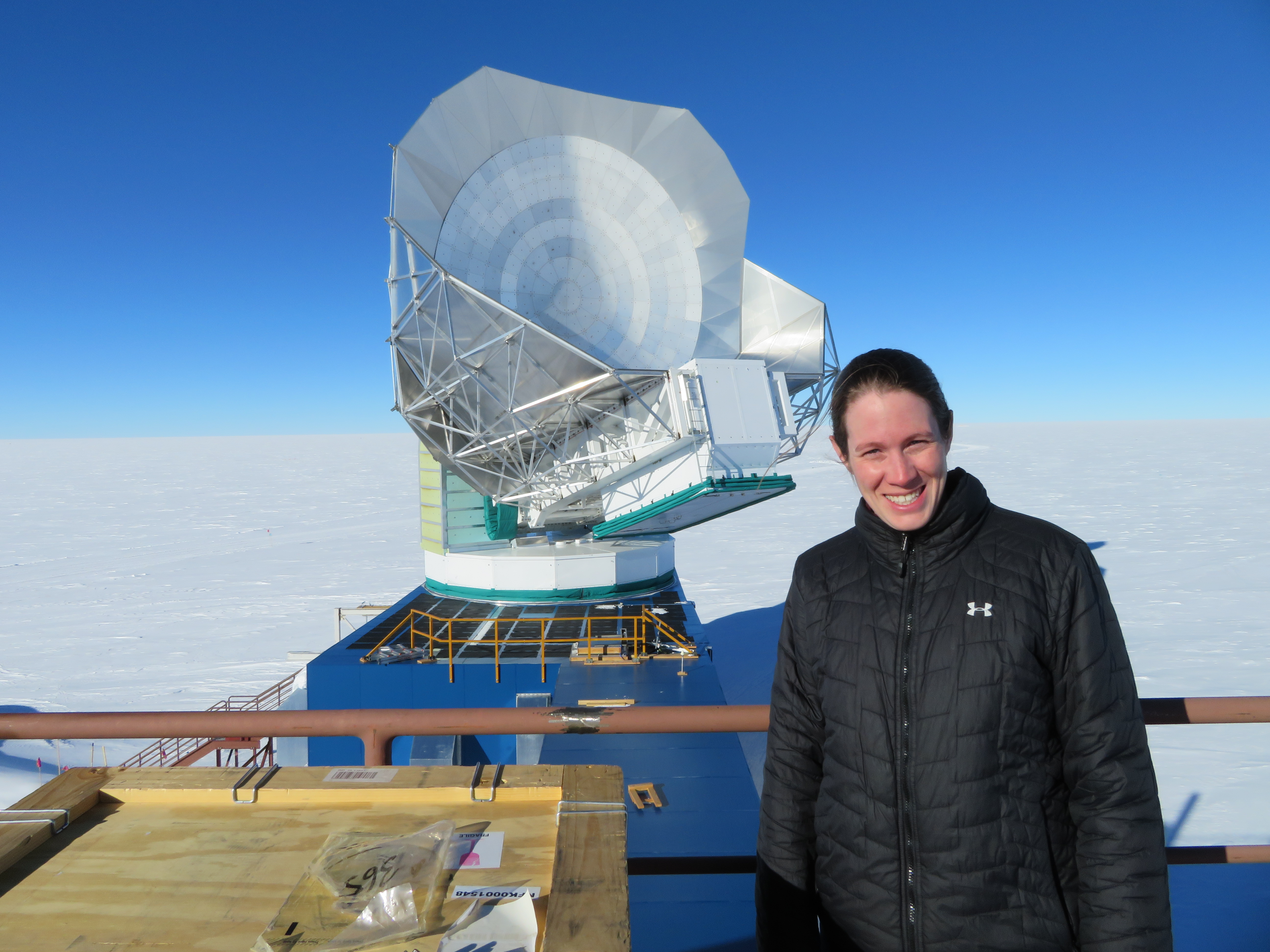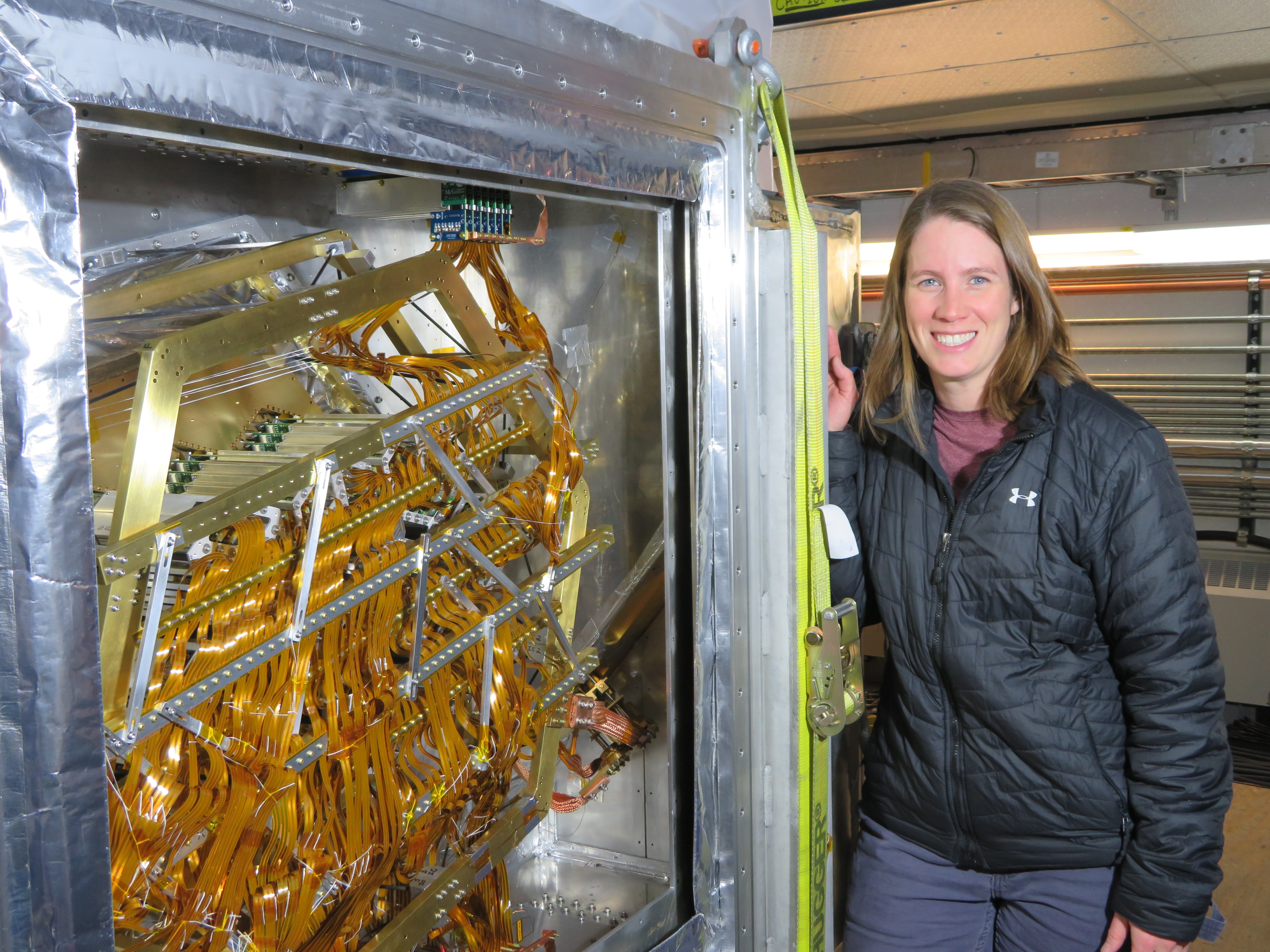
Amy Bender
I'm an experimental cosmologist who builds instruments to measure the cosmic microwave background (CMB) and explore the evolution of the universe. My primary focus for the past several years has been on developing the multiplexing readout systems used to operate the superconducting detectors used in CMB receivers. These complex readout systems allow many detectors to be operated using a single pair of wires. Thousands of such detectors can then be successfully cooled to sub-Kelvin temperatures where they have exceptional sensitivity to incoming light. I played a leading role in the development of the frequency-domain multiplexed readout for the SPT-3G instrument that is now successfully observing on the South Pole Telescope. Additional areas of expertise and interest include developing millimeter-wavelength detectors and the cryogenic chambers they operated in as well as techniques for analyzing the resulting data. I've been lucky enough throughout my career to experience and contribute to most aspects of a CMB experiment, from developing readout and detectors to installation and operation on a telescope and extracting new astrophysics and cosmology from the resulting data.
SPT-3G is surveying 1500 square degrees of sky with its polarization-sensitive receiver. It will be able to make precision measurements of both the E and B mode components of the CMB polarization, further constraining the theory of an inflationary epoch a fraction of a second after the Big Bang, neutrino mass, and the growth of large-scale structure in the universe. Now that SPT-3G is continuously surveying the millimeter-wavelength sky, I have a leadership role in maintaining the instrument's optimal operation through its lifetime. I'm also working to characterize the instrument properties and their systematic impact on the cosmological measurements.
I'm also heavily involved in the CMB-S4 experiment as one of the lead scientist for the South Pole site infrastructure and on-site integration and commissioning. CMB-S4 aims to field approximately 500,000 superconducting detectors to telescopes observing at both the South Pole and Chile. The sensitivity of CMB experiments is directly related to the number of detectors, so CMB-S4 will be truly unique and powerful. CMB-S4 plans to distribute these detectors across an array of 9 smaller telescopes (0.5-meter diameter) and three large telescopes to maximize scientific impact on a range of cosmological goals. The implementation of CMB-S4 presents a range of both opportunities and interesting technical challenges to overcome before the planned start of observations at the end of this decade.


